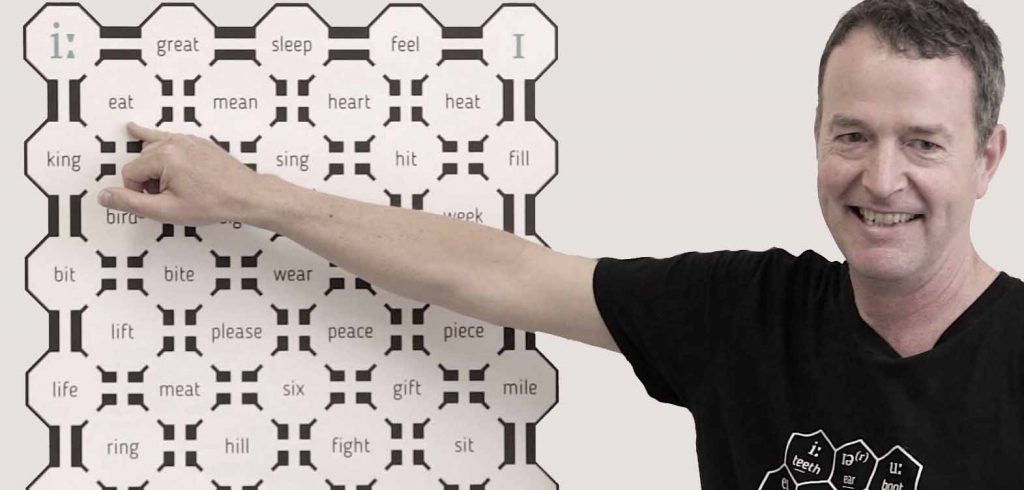
It is not always clear if sound and spelling patterns are a matter of pronunciation or of literacy, and for that reason perhaps it is sometimes overlooked in pronunciation teaching. However, in my experience, most learners come to pronunciation class already under the influence of written words and spelling-induced errors are some of the most frequent problems.
In my view it is definitely worth spending time on patterns of sound-spelling correspondence. For instance, in the game you see in the photo, learners are pushed to notice that the vowel sound in TEETH is normally spelt ‘ea’ or ‘ee’. There are exceptional spellings too, like the ‘ie’ in ‘peace’ – this makes possible homophone pairs like ‘piece-peace’.
Learners will also need to know patterns of which instances of ‘ea’ or ‘ee’ are NOT the TEETH vowel. For example, in the game in the photo, they will see that a following ‘r’ will change the vowel sound so that ‘heart’ and ‘wear’ do NOT have the TEETH vowel. Often, a spelling has a less common alternative spelling. For example, ‘ea’ may have the FACE vowel, as in ‘great’.
Mazes like the one in the photo are great for this kind of pattern-noticing. This particular maze can be downloaded from this site under Resources for Book 2, (2.2 Version 7). Or head over to hancockmcdonald.com, where you will find the activity with complete teacher’s notes. And take a look at YouTube, where you will see me teaching with it in class.


I would love to receive this pack .
Love that board!